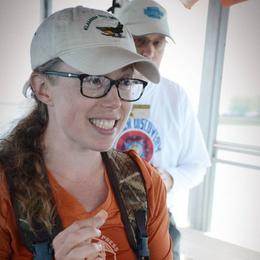Brrrr, its cold outside!! It’s that time of the year to enjoy your bird feeders and the wintering songbirds they can attract! Northern Cardinals, Red-breasted Nuthatches, Black-capped Chickadees, Downy Woodpeckers, Dark-eyed Juncos, and White-throated Sparrows are ready to visit!
Bird feed can attract other wildlife as well, especially black bears if they already live in your area. Because they have snuggled in for their long winter sleep, winter-time bird feeding should no longer attract bears to your yard! Bears love bird seed and will regularly visit your feeder when they are awake and moving about. If you live in an area known to have black bear, mark your calendars now to take your feeders inside come March!
Please note that after January 31, 2019, deer and elk feeding will not be allowed in the Lower Peninsula in an effort to prevent deer gathering around a food source, which increases the potential spread of Chronic Wasting Disease (CWD). We encourage you to use tube, hopper and suet bird feeders rather than putting seed directly on the ground or using platform feeders, which tend to attract deer and other unwanted guests. In addition, mess-free bird seed options are available to purchase at stores, which can help keep the ground clean. You can also prevent deer access to your feeders by fencing around your feeders, if possible. Please review MI DNR’s current feeding rules and regulations for your county here.
If you have any questions or concerns about the new regulations going into effect on January 31st, please contact your local DNR Customer Service Center.
To learn more about which feeders and foods attract which bird species, check out Project Feeder Watch’s latest online resource on common feeder birds.
MI Birds is a public outreach and education program created by Audubon Great Lakes and Michigan Department of Natural Resources. Birders and hunters share similar conservation values, but rarely cross paths. MI Birds aims to bridge the divide, and deepen Michiganders engagement in the understanding, care, and stewardship of public lands that are important for birds and local communities.







